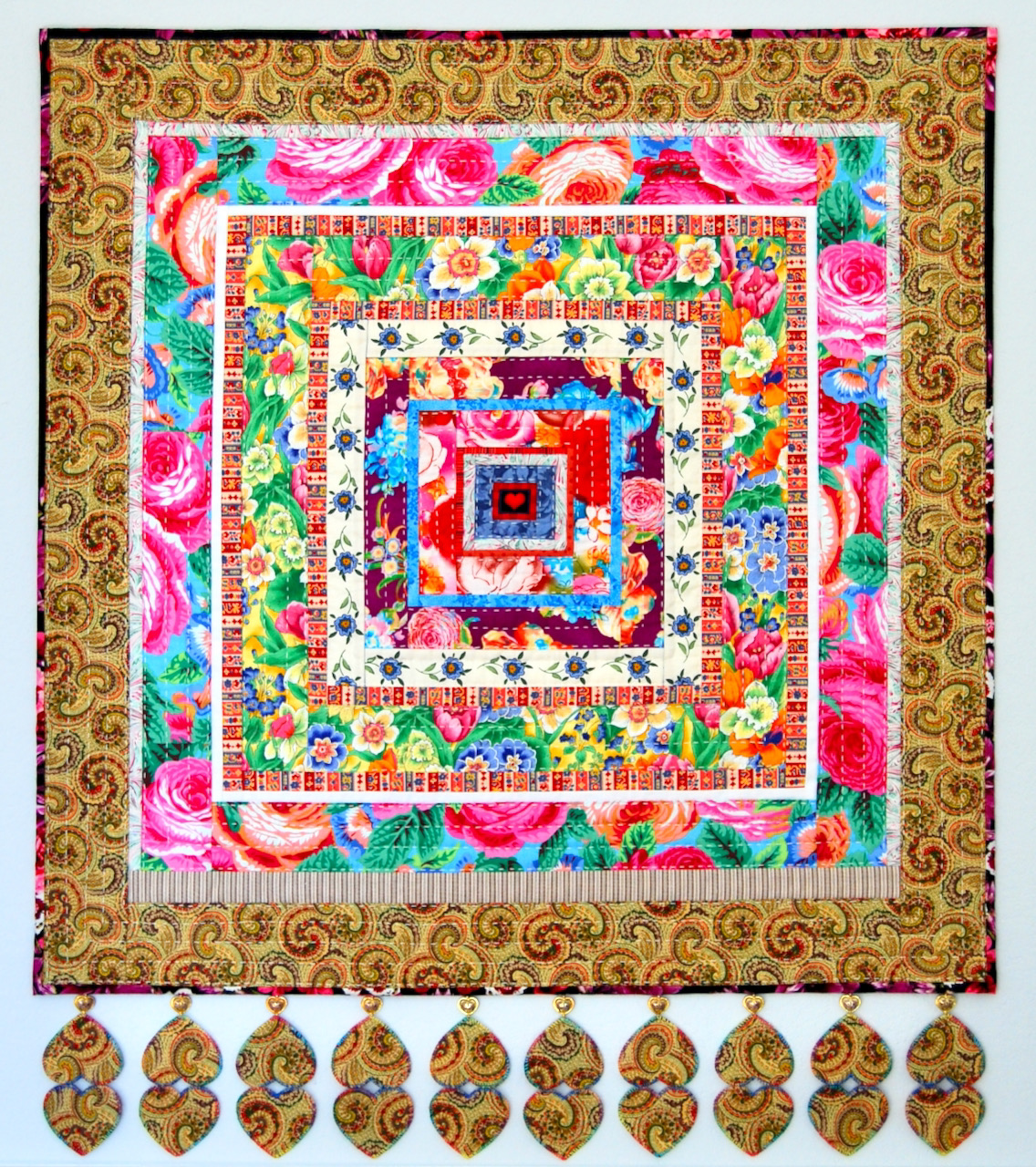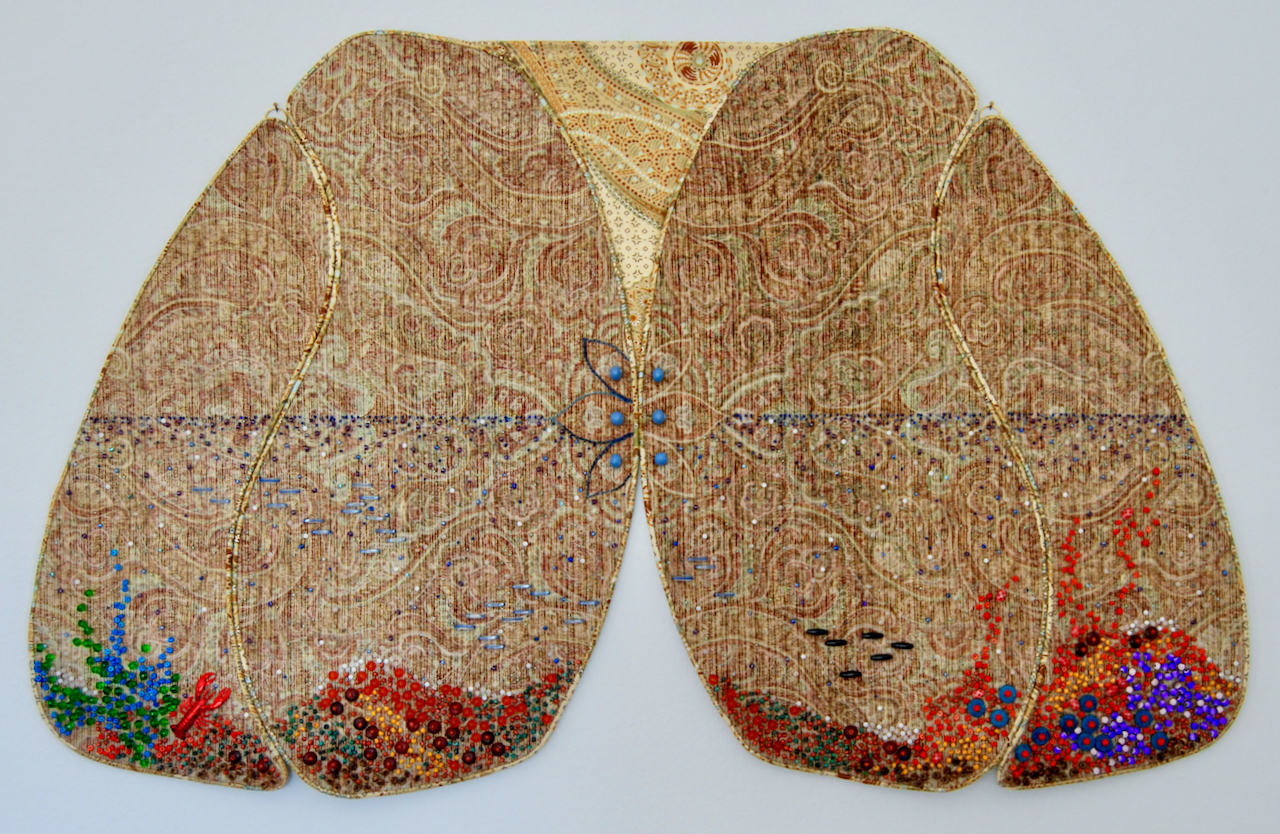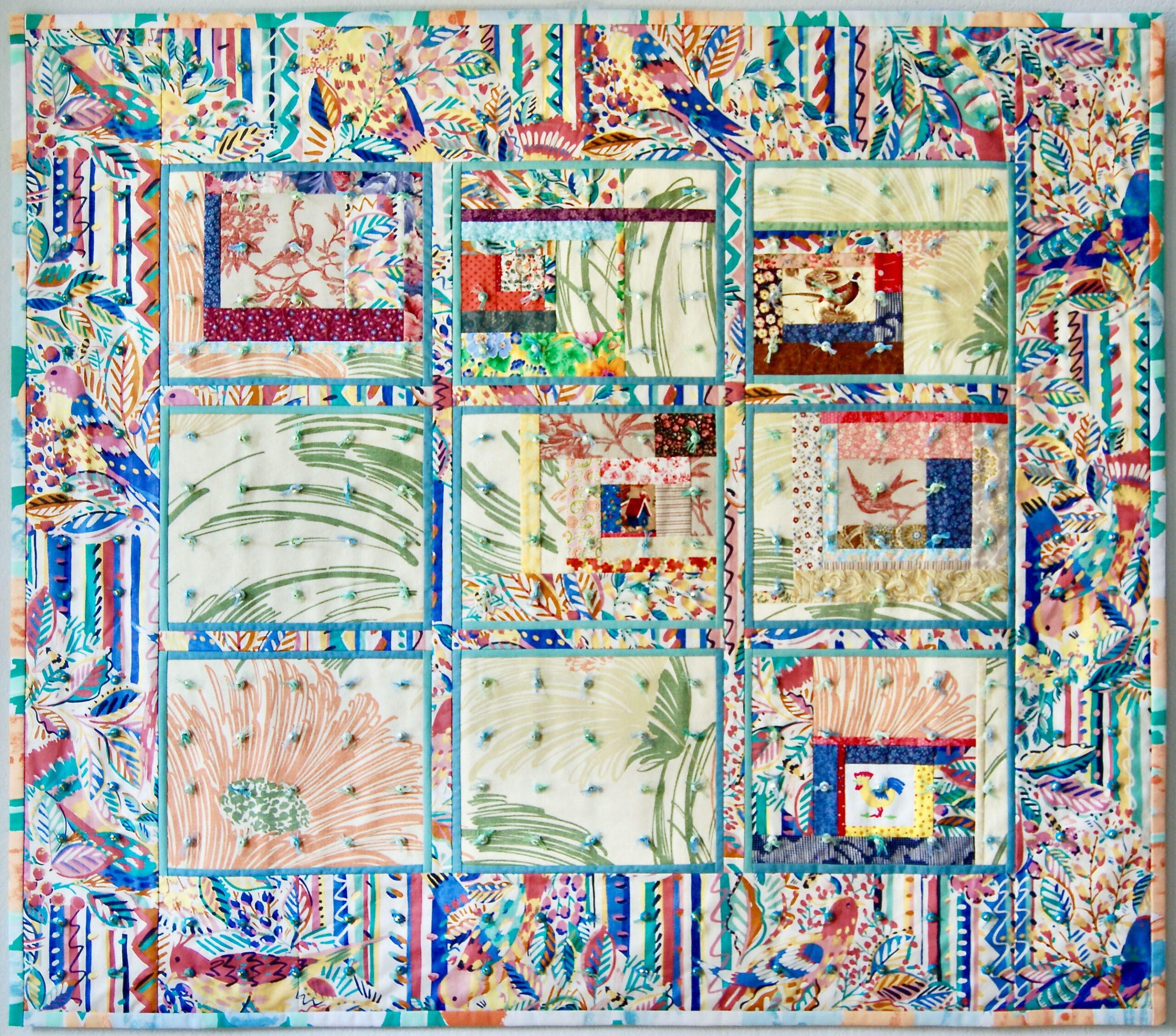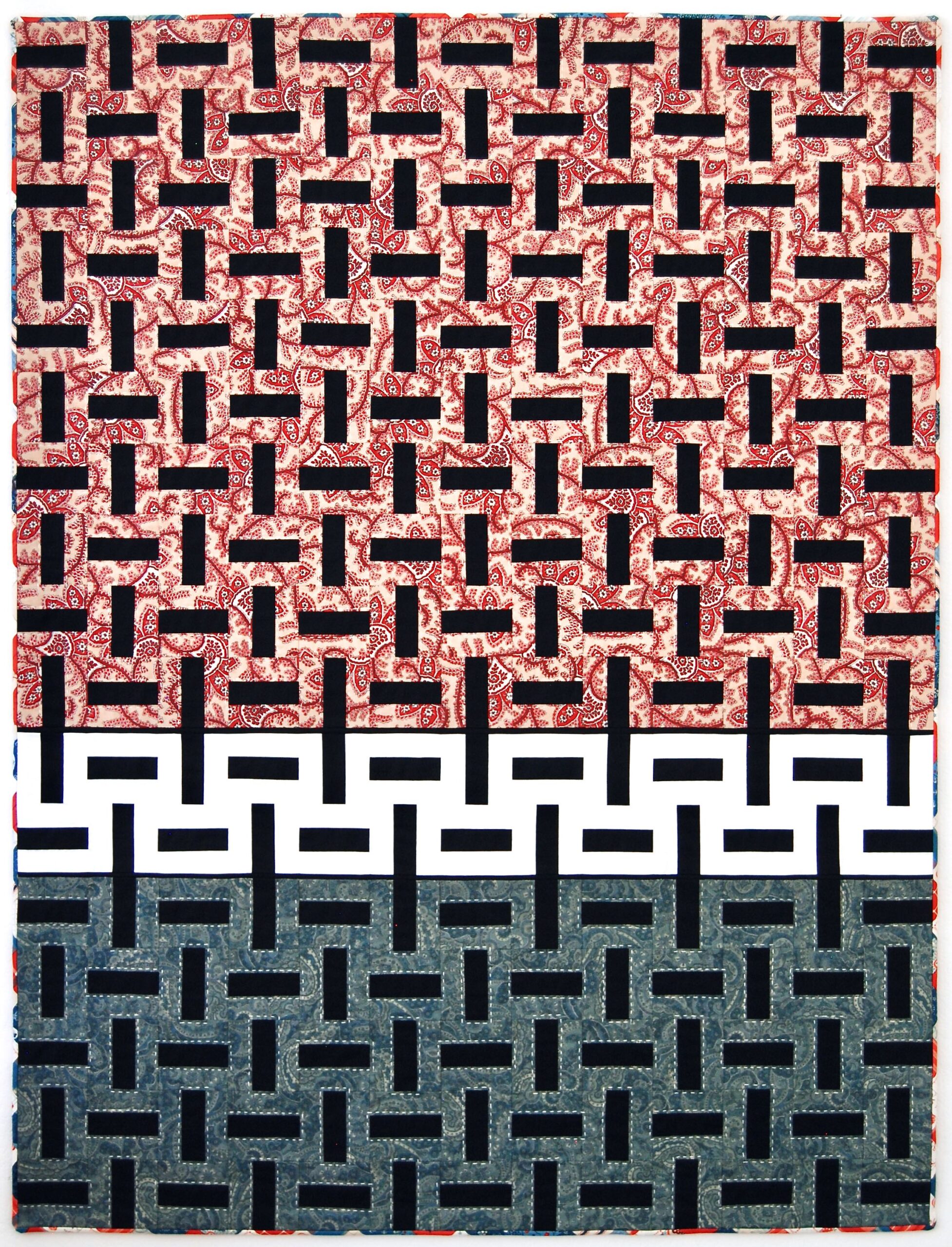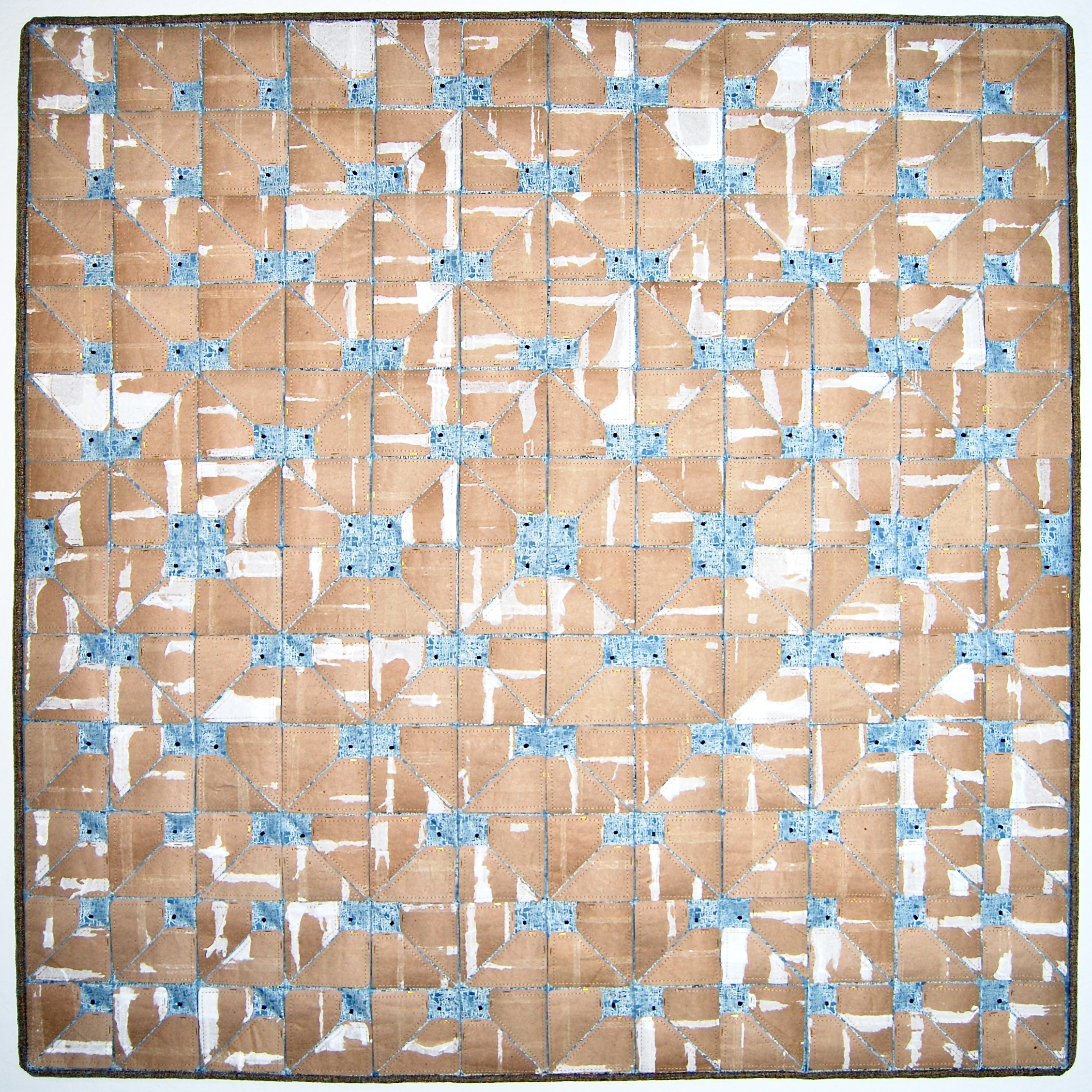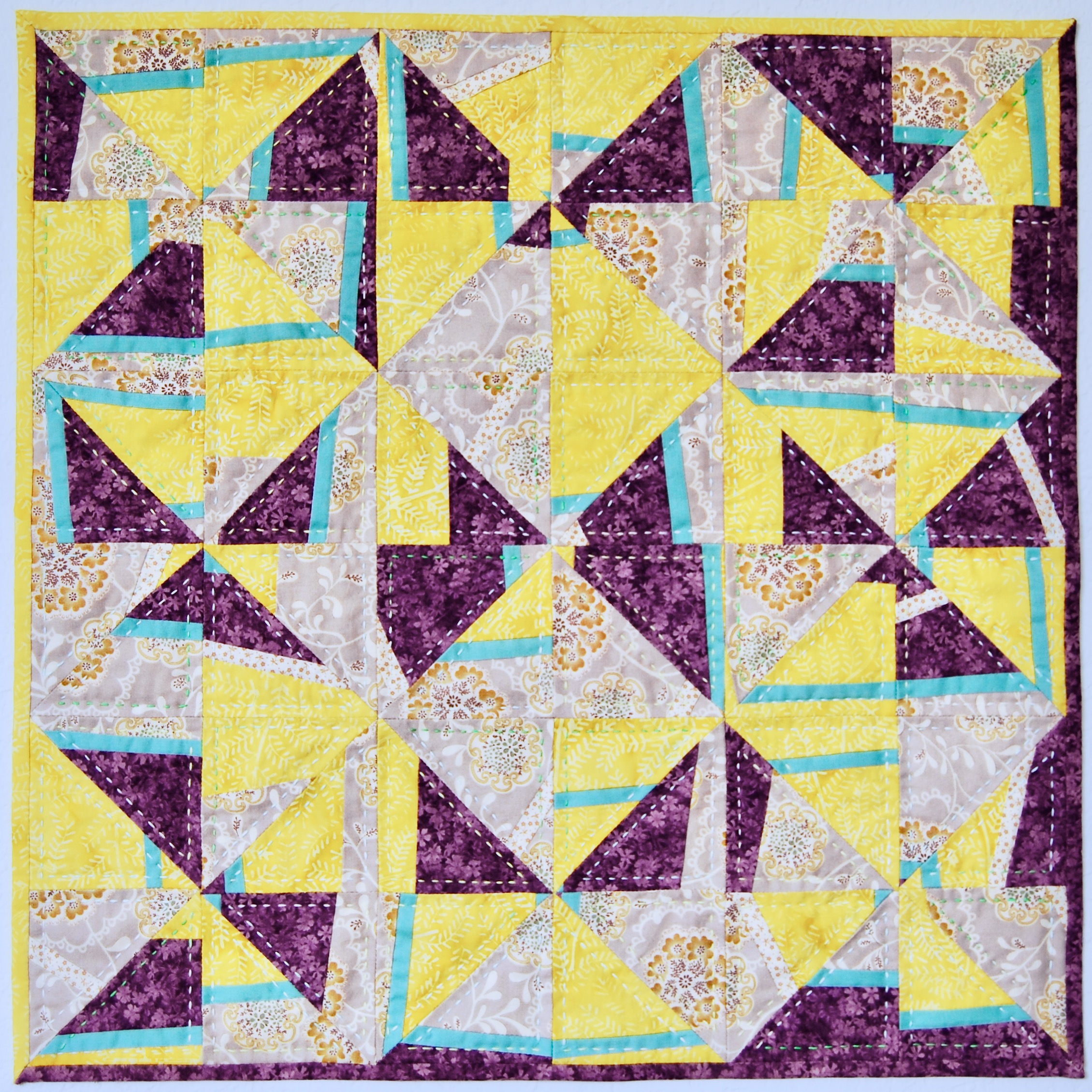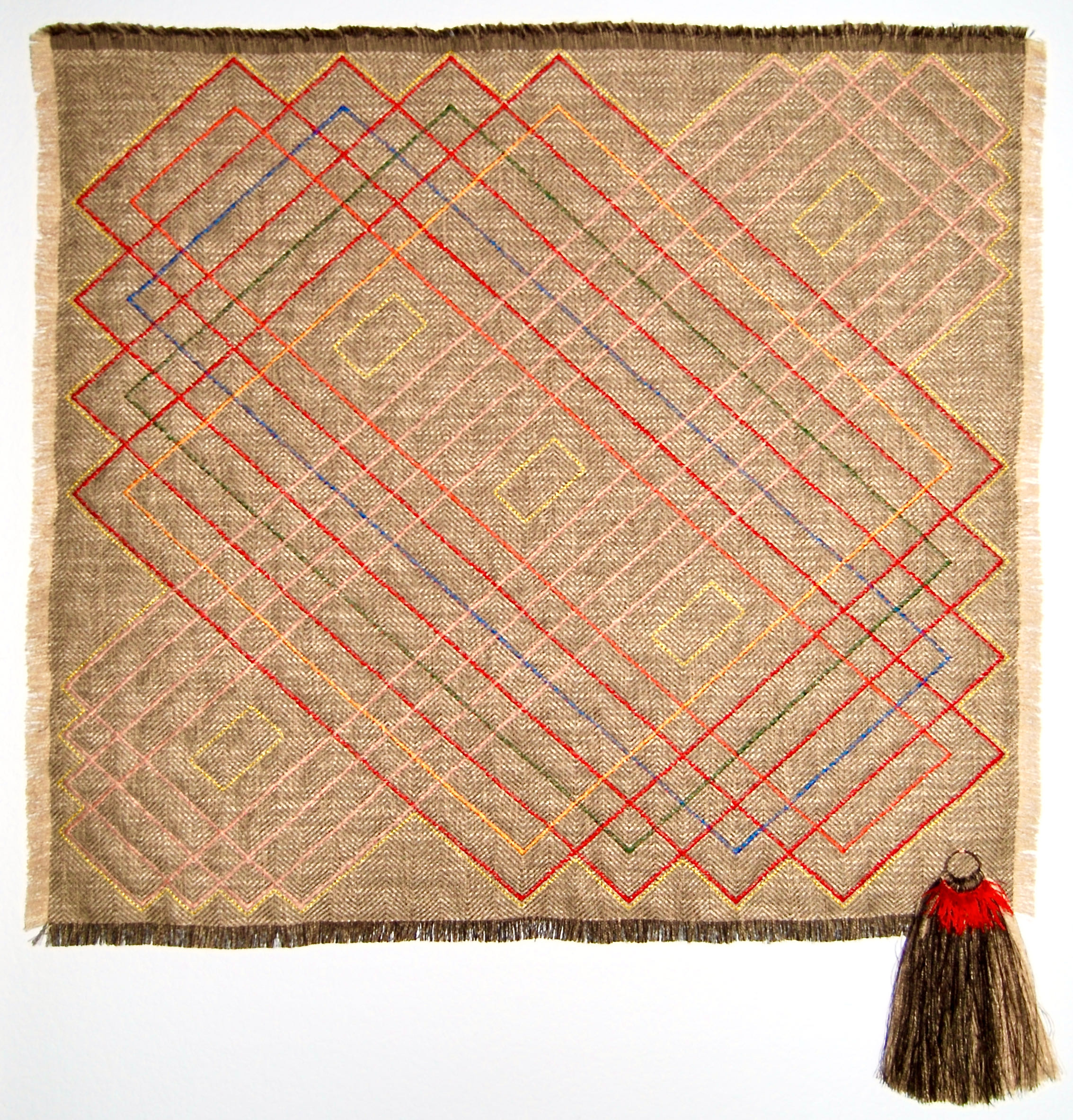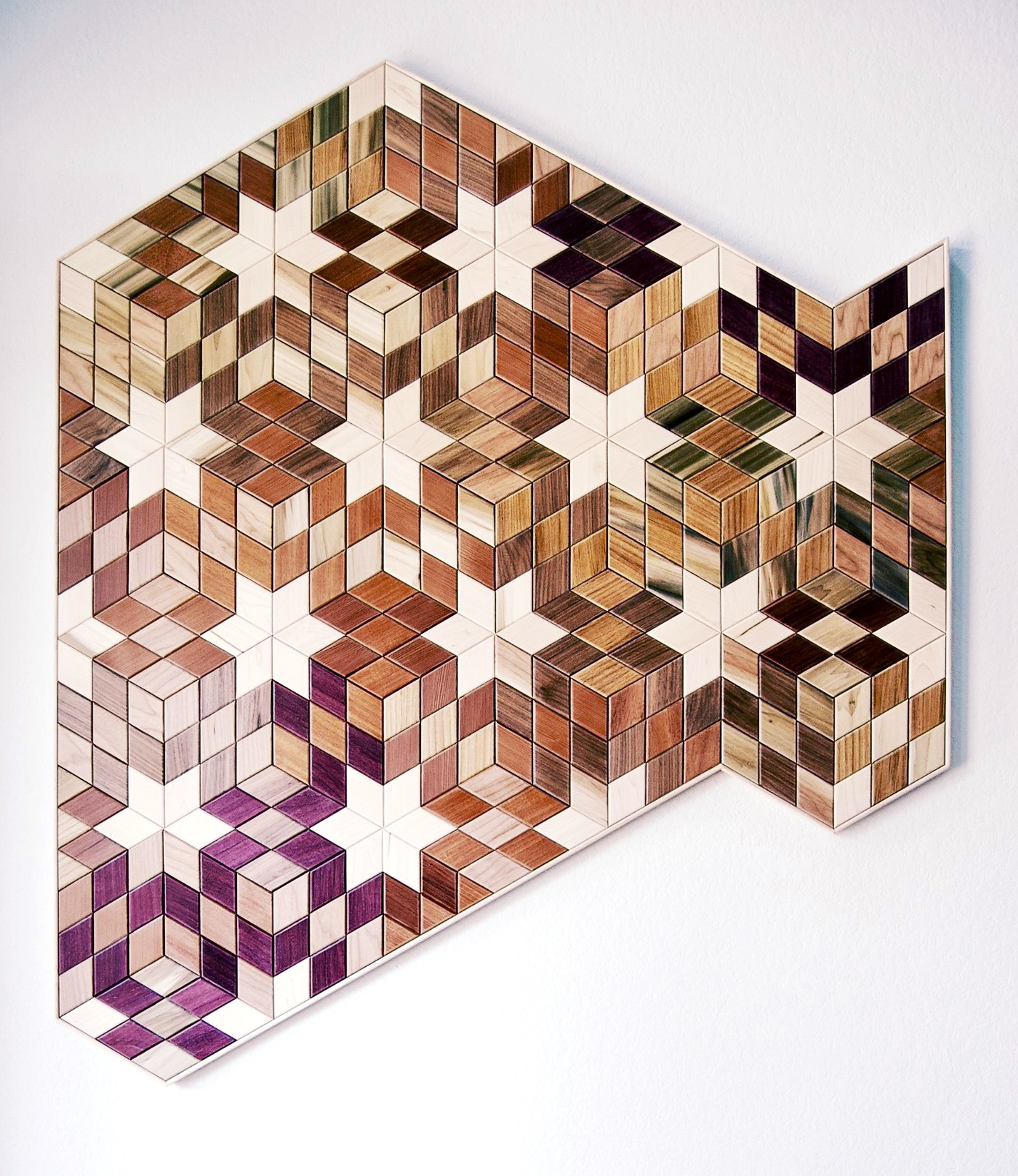Linda M Kim
she/her
Linda Kim
Creating Love from Despair, 2021
Found fabric, recycled clothing, found beads, felt, sashiko thread, common thread, batting 35.5 x 30 inches
In this second year of the pandemic, extreme natural disasters, and extremer divisive politics, how does one not succumb to anger and despair? Recently, while feeling disheartened, I came upon the Dalai Lama’s album, Inner World. In the last song, Humanity, he gently speaks about violence and killings due to human emphasis on “we and they, me and them”. Instead he advised compassion and connection to our fellow brothers and sisters, irrespective of differing beliefs. Hearing his soothing words lifted my spirits and I began this project with one small red heart and proceeded improvisedly. Love is tolerance and respect. Love is comfort and refuge. Love is color-blind and inclusive. Love is kindness and hope. Love is the answer.
Linda Kim
Life Jacket, 2021
Found fabric, found beads, found metal rings, bamboo stick, thread, found batting 26 x 42 inches
The fashion industry is the second-largest consumer of world’s water supply and produces more carbon emissions than international flights and maritime shipping combined each year. Washing synthetic clothes releases 500,000 tons of microplastics (such as polyester that does not break down) into the ocean each year — equivalent to 50 billion plastic bottles. Plastic pollution threatens marine life. Oceans are an important source of food and host to 80% of the planet’s biodiversity. Healthy oceans reduce climate change impact by absorbing 90% of excess heat and 30% of greenhouse gas emissions. The fast-fashion trend compounds these problems. People buy more of cheaper clothing and keep them for a lot less time — sending 85% of all textiles to landfills each year. Indeed, there is growing consumer awareness for sustainable and ethical fashion. But the best way to be truly sustainable is to buy secondhand and make do with less. This project was created with found fabrics and beads.
Linda Kim
Chicken: World’s Favorite Meat, 2021
Found and recycled fabric, found beads, recycled sequins, found embroidery floss, thread, batting 47.5h x 54w inches
Of all birds on Earth, just 30% are wild and 70% are farmed poultry. Our natural world is perilously out of balance. And over the next century, an estimated 1,200 wild bird species face extinction. The domestic chicken descended from the red jungle fowl native to tropical southeast Asia. As the planet’s growing human population demands more meat, chicken has become the world’s most consumed meat; 50 billion chickens are killed for food every year. The United States is the world’s top producer of chicken meat. In addition to depleting water resources and degrading climate, animal production is notorious for cruel and inhumane treatment. Farmed birds are also excluded from all U.S. federal animal protection laws; as a result, chickens are one of the most abused animals on the planet. Healthy wild bird populations are essential to human life. Birds are natural pest control devouring insects that can destroy crops or spread diseases; scavenging birds dispose carcasses. Birds disperse plant seeds integral to healthy ecosystems. Birds’ sensitivity to habitat change are vital indicators of environmental dangers. And by the sheer numbers of avid birdwatchers around the world – 45 million in U.S. alone contributing $80 billion to the U.S. economy – birds are fascinating and beautiful creatures that bring joy to their lives. Conservation is an important component of my art practice. All visible materials on this project were found or recycled – including an old kitchen towel fortuitously containing a cartoon chicken.
Linda Kim
1 in 3 in USA, 2020
Recycled tablecloth, cotton, found fabric, thread, batting 51 x 38.5 inches
One in three Black males will go to prison in their lifetime. The 13th Amendment abolished slavery in 1865 but a loophole clause allowed for enslavement if convicted of a crime. The result is staggering racial disparities in American legislative and criminal justice systems. The U.S. has 4% of the global population but has 25% of global prison population – the most of any nation with 2.2 million people incarcerated and an additional 4.5 million people on probation or parole. Black Americans make up 13% of general population but 34% under the control of the criminal justice system. I designed a simple weave pattern to best illustrate Black lives in mass incarceration, as well, to conjure images of abstracted African masks – a symbol of ancestral spirits.
Linda Kim
T.P. Mania, 2020
Fabric, toilet paper tubes, staples, found beads, thread, batting 38 x 38
In early spring, the humble toilet paper made headline news for weeks. As fear and frenzy gripped people around the world, I wanted to reflect on this shared and surreal moment.
Linda Kim
The Butterfly Effect, 2019
Cotton, thread, batting 20 x 20 inches
Springtime is simply glorious in Texas. Along highways and backroads everywhere, wildflowers bloom profusely. In the Hill Country the show opens with the famous bluebonnets and what blooms next depends on weather and rainfall making every spring performance uniquely colorful. It has inspired me to create my own home gardens with native plants which attract pollinators — bees, hummingbirds and the butterflies. Texas has the greatest butterfly diversity in the U.S. with over 400 species. My gardens feed wildlife which support the local ecosystem and, collectively, a healthier planet.
Linda Kim
Seeing Shapes, 2019
Found fabric, found metal ring, embroidery floss, thread, wool batting 37h x 35w inches
Looking at the loose chevron weave of the fabric, combinations of forms emerged in my head. This is spatial reasoning which has everyday applications because it involves problem solving. Multiple studies show that early music instruction is linked to enhanced spatial reasoning abilities. Overall, learning to play a musical instrument has many mental, cognitive and emotional health benefits and should be emphasized in primary education. No activity uses the entire brain like playing music. To illustrate, when our eyes see musical notes our brain converts these abstract symbols to appropriate timed sounds executed in rhythm by the coordination of our fingers/hands/feet. The result is improved fine motor, reading, listening, concentration and math skills. Nearly 2,400 years ago Plato said, “I would teach children music, physics, and philosophy; but most importantly music, for the patterns in music and all the arts are the keys to learning.”
Linda Kim
Pieced, 2017
Maple, poplar, walnut, cherry, redwood, purple heart, teak, Spanish cedar, African mahogany, plywood, adhesive, clear acrylic 54.5h x 47w x 1d inches
Quilts inspired this project as the title references the traditional method of stitching small fabric pieces to create a whole, designed in ornamental patterns. I'm drawn to the resourcefulness of quilters past who repurposed fabric scraps and constructed something utilitarian that's just as pleasing to behold. More than that, each quilt is an original, relying on the remnants at hand and the patience and skill of the quilter. With 'Pieced', I had the opportunity to showcase the bountiful qualities of natural woods in all their many hues and unique characteristics. All woods are presented in their natural state, no color additives were used.
